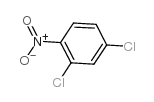Control of the immune response to contact sensitizing chemicals by cutaneous antigen-presenting cells.
P A Botham, N J Rattray, S T Walsh, E J Riley
Index: Br. J. Dermatol. 117(1) , 1-9, (1987)
Full Text: HTML
Abstract
The fate of 2,4-dinitrochlorobenzene, a potent contact sensitizing chemical, and 2,4-dichloronitrobenzene, a non-sensitizer, was compared following their application to the skin of BALB/c mice. Although both chemicals were able to bind to protein in vitro and were capable of being absorbed across mouse skin in vivo, only 2,4-dinitrochlorobenzene was able to bind to cells in the skin and to induce the movement of these cells from the epidermis into the dermis and ultimately into the draining lymph nodes. The sensitization potential of a chemical may therefore be dependent on its ability to associate with and stimulate the efflux of cutaneous antigen-presenting cells.
Related Compounds
| Structure | Name/CAS No. | Molecular Formula | Articles |
|---|---|---|---|
 |
2,4-Dichloronitrobenzene
CAS:611-06-3 |
C6H3Cl2NO2 |
|
Contribution of caffeine and flavanols in the induction of h...
1998-08-01 [Food Chem. Toxicol. 36(8) , 617-21, (1998)] |
|
Dose-response effects of lycopene on selected drug-metaboliz...
2000-06-30 [Cancer Lett. 154(2) , 201-10, (2000)] |
|
Dinitrochlorobenzene is inherently mutagenic in the presence...
1988-03-01 [Arch. Dermatol. 124(3) , 396-8, (1988)] |
|
Investigating protein haptenation mechanisms of skin sensiti...
2007-06-01 [Toxicol. In Vitro 21(4) , 723-33, (2007)] |
|
Mass spectrometric identification of covalent adducts of the...
2008-08-01 [Toxicol. In Vitro 22(5) , 1169-76, (2008)] |